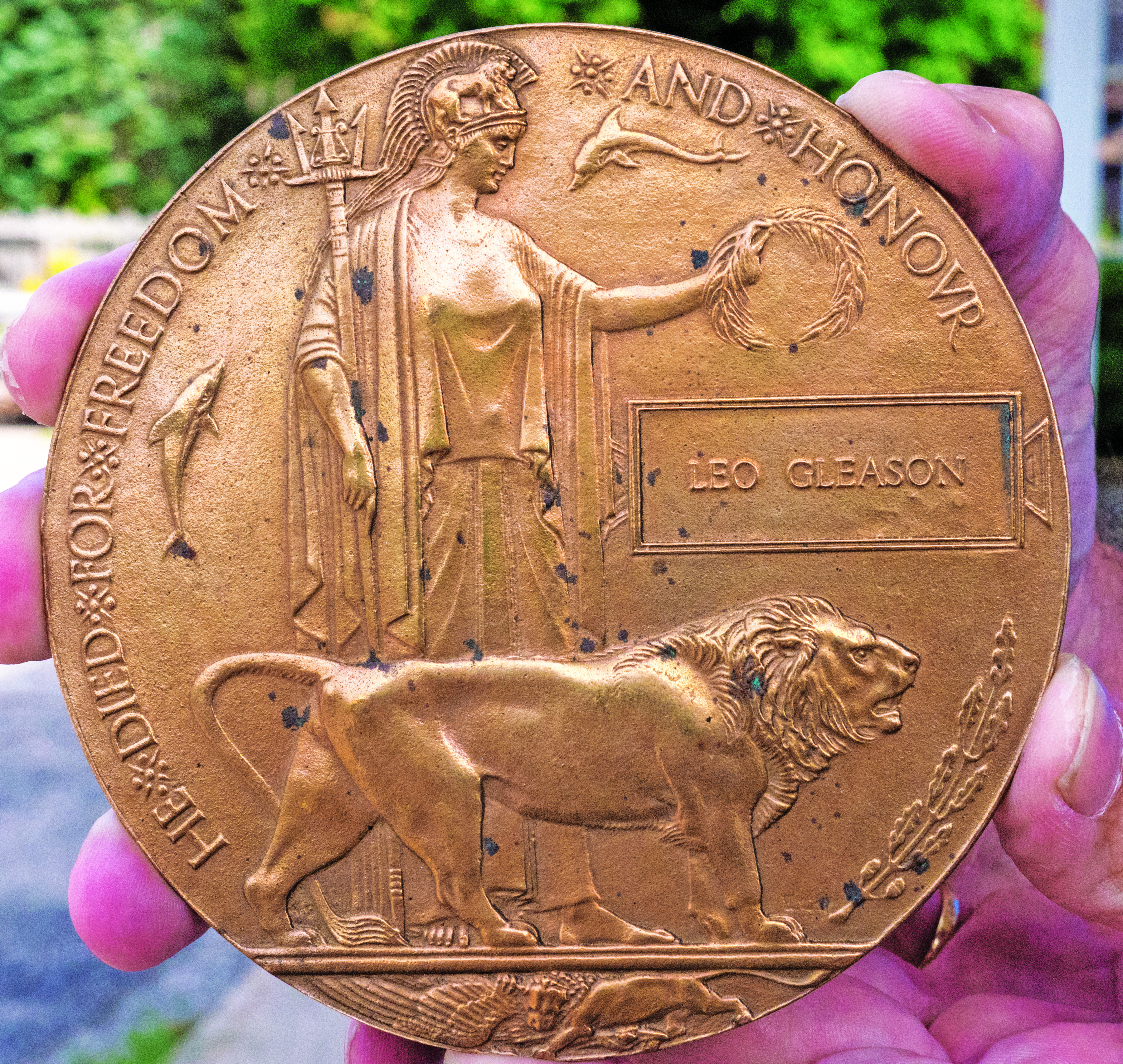Tom Slater & Tom St. Amand
Pete and Cindy Ancevicius never suspected watching Don Cherry on an episode of “Coach’s Corner” would help solve a family mystery.
But during a Remembrance Day segment the patriotic Cherry displayed a large bronze coin and offered details about the so-called “Death Penny” or “Dead Man’s Penny.”
Ancevicius thought he’d seen one tucked among his family’s possessions but had no idea what it was. He eventually located the bronze coin, but that was the easy part. The hard part was discovering what it represented.
The Sarnia couple would learn the British government made 1.3 million memorial coins after the end of the First World War.
Along with a Memorial Scroll and a letter from King George, the coins were issued to the families of any soldier from the British and Empire forces that died in service.
Formally called the Next of Kin Memorial Plaques, the coins soon were known as “The Death Penny” or “The Dead Man’s Penny”.
Each bronze coin is 11 centimetres in diameter. The central symbol is a figure of Britannia facing left, bowing her head and holding a laurel wreath in her left hand. In her right hand is a trident with a lion, the symbol of England, at her feet. A smaller lion bites into a winged creature representing the German Imperial Eagle.
The first mystery for the Ancevicius family was solved but another one remained.
Each soldier was to receive the same honour, so every coin features only the name of the deceased with no regiment or rank listed.
“Leo Gleason” was the name on the family coin but they had no real idea who Leo was. Through diligent research, Pete and Cindy’s daughter, Kristin, found the answer.
Leo Gleason was Pete’s great-uncle’s son, who was killed in action on Sept. 3, 1918. He was born in Oil Springs in 1892, the youngest of eight children, and lived in Petrolia in his teens before moving to Sarnia.
He lived on William Street and was working as a boilermaker when drafted under the Military Service Act of 1917.
Private Gleason arrived in England on Feb. 16, 1918 as a member of the 4th Canadian Reserve Battalion. He went to France that June with the 47th Battalion, and in August was transferred to the 44th Battalion, the Manitoba Regiment.
The high death rate among Canadian infantrymen during the Battle of Amiens meant reserves would supplement the front lines for The Second Battle of Arras, the next campaign of Canada’s Hundred Days Objective.
Private Gleason was one of 100,000 Canadians who attacked the Hindenburg Line on Aug. 26th. With the battle nearly won, he was killed near the French village of Dury.
Notes in the Circumstances of Death Register state, “[Private Gleason] was instantly killed by the heavy shell fire opened up by the enemy.”
Leo Gleason, 26, died one century ago and has no known grave. His name is inscribed on the Vimy Memorial in Pas de Calais, France and on the Petrolia cenotaph.
The Ancevicius family is doing its part to keep his memory alive. For two years, Pete and Cindy’s son, Jamie, an elementary teacher in Durham County, has shown the family’s “Death Penny” to his classes on Remembrance Day.
Thanks to Don Cherry and Kristin, he will have more of the story to share with his students this November.


